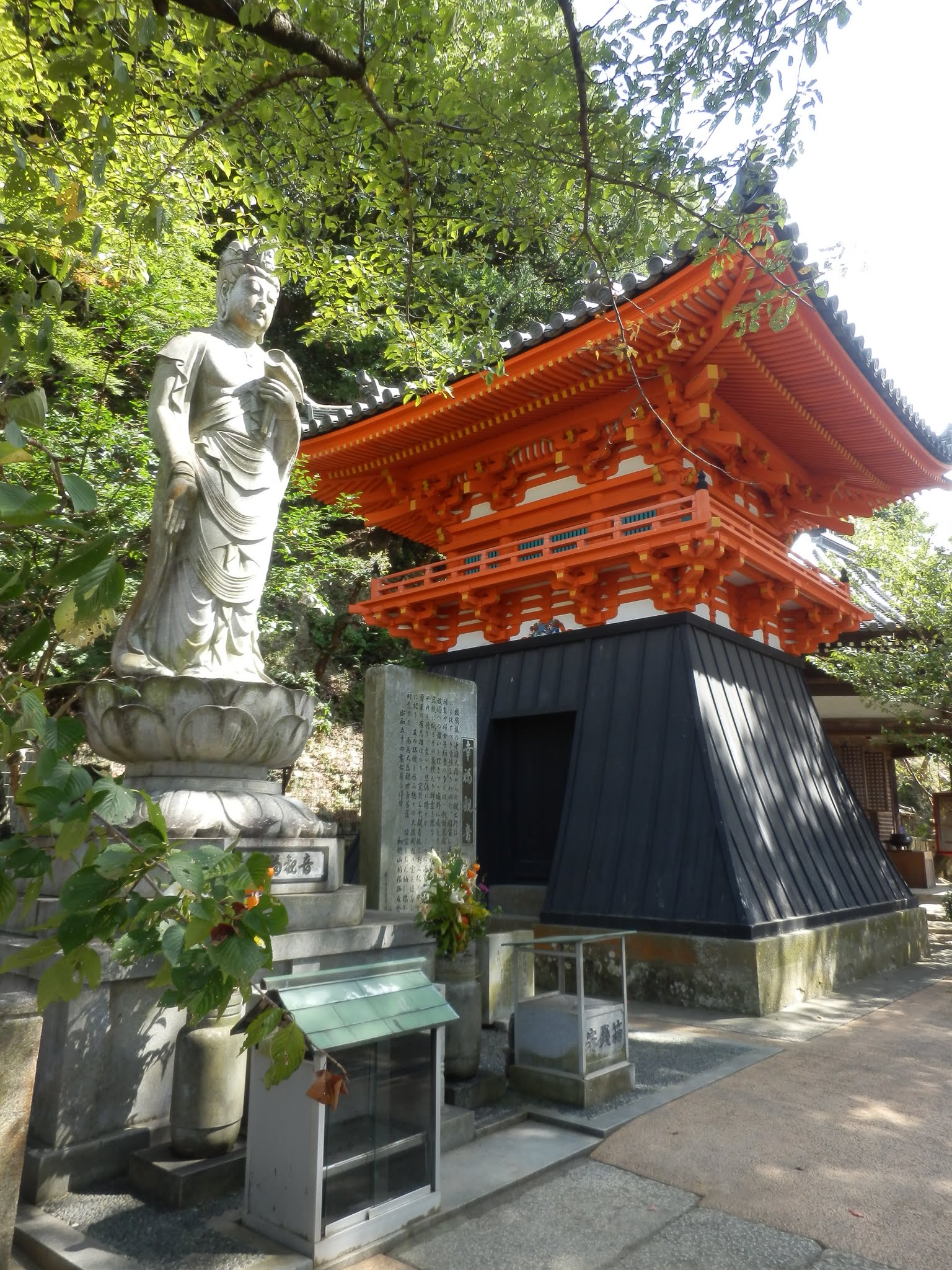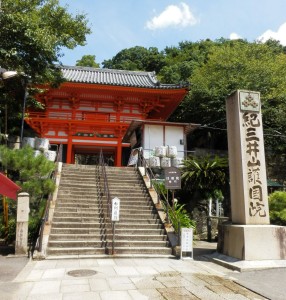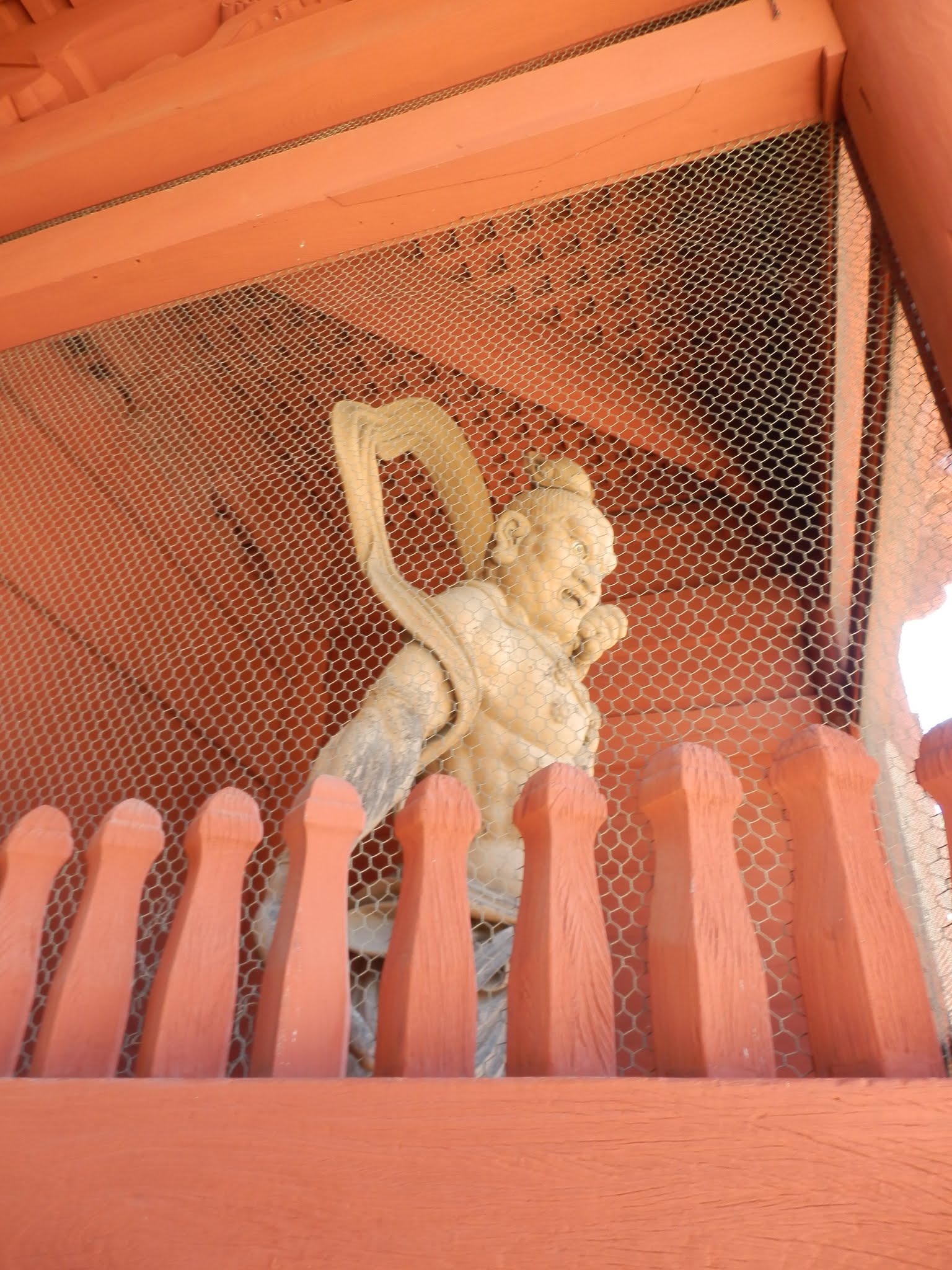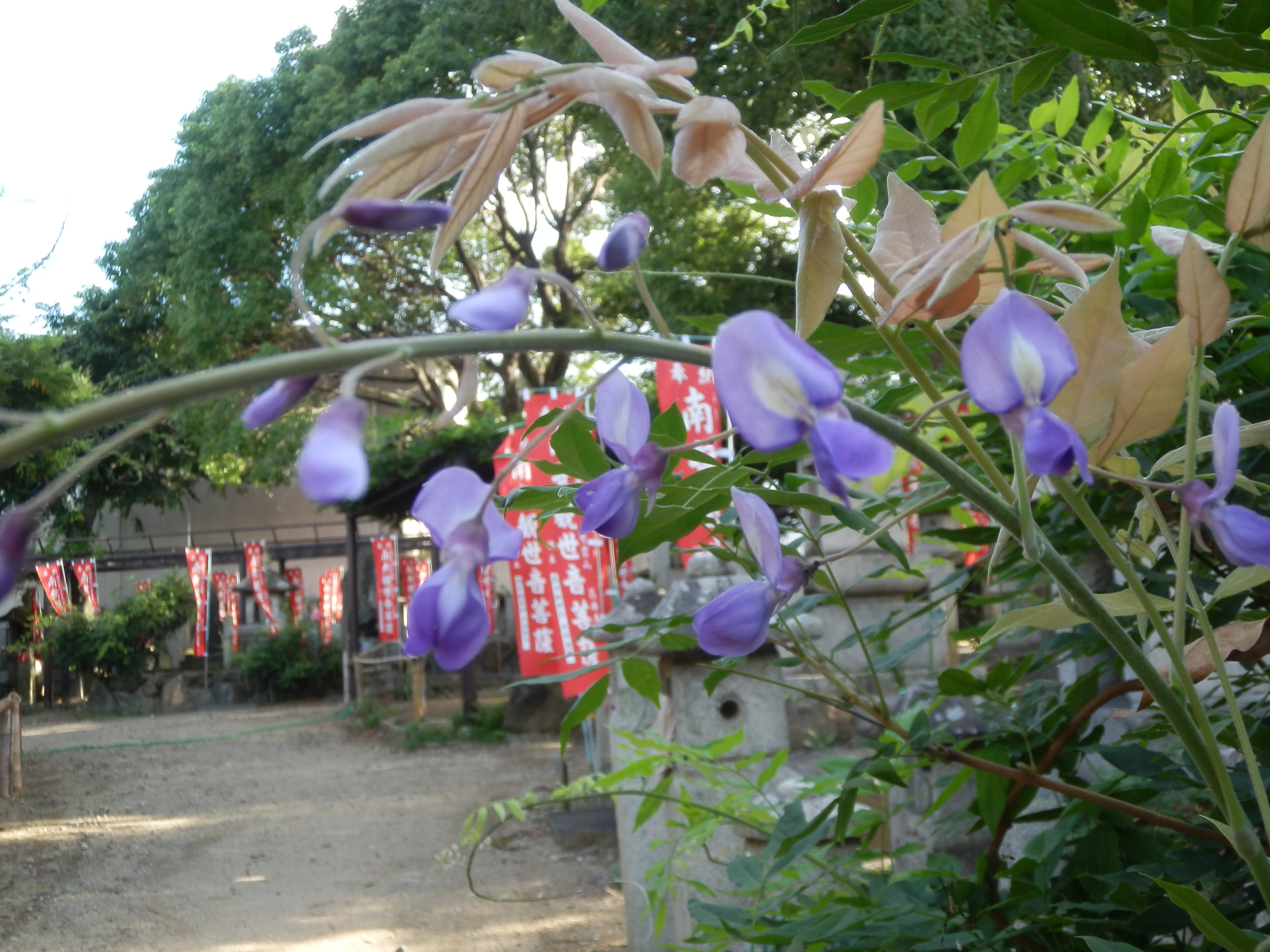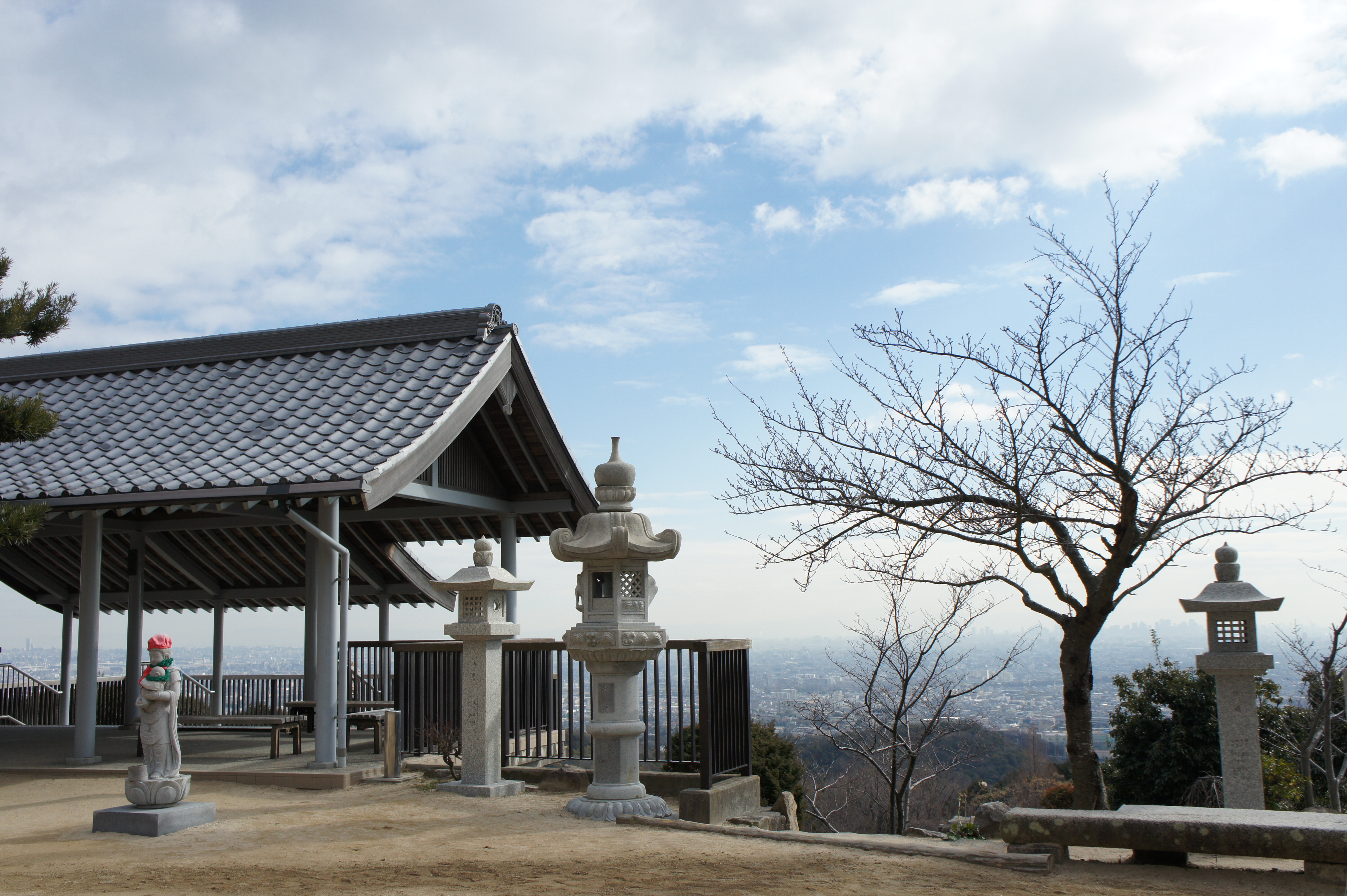Saigoku Kannon Pilgrimage: Kimii-dera 紀三井寺
Our travels are taking us further and further afield, this time down the coast to Wakayama-ken! Kimii-dera is temple number two on our pilgrim quest.
The only temple farther south on our list than Kimii-dera is temple number one, Seiganto-ji, deep in Wakayama. Getting to Kimii-dera takes some doing, but in cherry blossom season it’s well worth it. The temple is famous for its glorious cherry blossoms, the blooming of which heralds the official start of spring for the entire Kansai region. 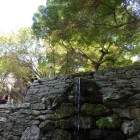 The seeds for these old trees were said to have been given to the temple’s founder by the Dragon King who lives under the sea. Kimii-dera’s name, meaning “Three Sacred Springs,†comes from the three found on the grounds, the Well of Purity, the Well of Healing, and the Well of Good Fortune.
The seeds for these old trees were said to have been given to the temple’s founder by the Dragon King who lives under the sea. Kimii-dera’s name, meaning “Three Sacred Springs,†comes from the three found on the grounds, the Well of Purity, the Well of Healing, and the Well of Good Fortune.
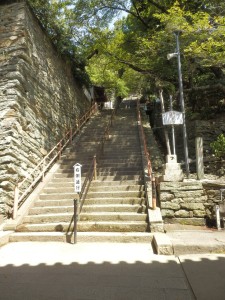 Kimii-dera overlooks the Bay of Poetry, Wakanoura, and you only have to climb 231 steps to get up there. The staircase itself is called the Slope of Karmic Bonding, and has its own story. Once, a pious young man was carrying his elderly parent up to the temple when his sandal broke. A young woman who was working in the area at the base of the stairs saw this and brought him a replacement sandal. From this first meeting, the couple fell in love and got married, and both were led to a life of prosperity when the young man, in the employ of his father in law, made the whole family wealthy. The moral of the story is, if you climb the steps with an open and generous heart, you too can be united to your own happiness and prosperity.
Kimii-dera overlooks the Bay of Poetry, Wakanoura, and you only have to climb 231 steps to get up there. The staircase itself is called the Slope of Karmic Bonding, and has its own story. Once, a pious young man was carrying his elderly parent up to the temple when his sandal broke. A young woman who was working in the area at the base of the stairs saw this and brought him a replacement sandal. From this first meeting, the couple fell in love and got married, and both were led to a life of prosperity when the young man, in the employ of his father in law, made the whole family wealthy. The moral of the story is, if you climb the steps with an open and generous heart, you too can be united to your own happiness and prosperity.
Along the way up this precarious staircase, you will encounter paths to the sacred springs that give the temple its name; these are nice built-in breaks from the climb. The first is the Well of Purity, once used and renowned for its delicious water and said to be blessed by Kannon. 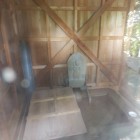 Further out from the steps is the Well of Good Fortune, seen through a window after its restoration, and further still is the Willow spring, also called the Well of Healing, so named for the soothing powers of the properties of the willow (often used in medicine), said to flow from Kannon’s grace as well.
Further out from the steps is the Well of Good Fortune, seen through a window after its restoration, and further still is the Willow spring, also called the Well of Healing, so named for the soothing powers of the properties of the willow (often used in medicine), said to flow from Kannon’s grace as well.
Once up the stairs, you can turn right to visit the newly built mausoleum (Shinbutsuden) which has an 11-meter figure of Thousand-armed (Senju) Kannon, officially consecrated in 2008. For a small fee, you can visit the upper floors 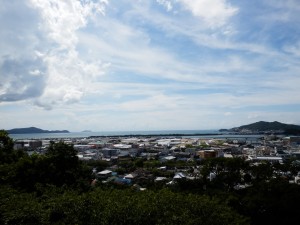 of the new building as well, which offer excellent views over the Bay of Poetry. Going right from the stairs will lead you toward the Hondo and a few other interesting pieces of Kimii-dera’s landscape.
of the new building as well, which offer excellent views over the Bay of Poetry. Going right from the stairs will lead you toward the Hondo and a few other interesting pieces of Kimii-dera’s landscape.
The Rokkaku-do (six-sided hall) near the top of the stairs is the mini pilgrimage, meaning that the images from all 33 temples are enshrined inside. Next to the Rokkaku-do you’ll see a stone monument shaped like a postcard. This is the Maigo no Tegami memorial, because Kimii-dera conducts a yearly 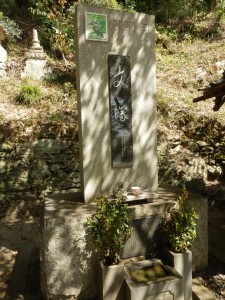 “Lost Mail Memorial Service,†this year on April 1st, for those letters which the Japan Post is unable to deliver. In Japan, undeliverable letters are known as lost-children letters (Maigo no Tegami). The memorial is for those who sent them, and those who never received them; I find this a touching way to handle letters that will not or cannot be sent (like letters to the departed).
“Lost Mail Memorial Service,†this year on April 1st, for those letters which the Japan Post is unable to deliver. In Japan, undeliverable letters are known as lost-children letters (Maigo no Tegami). The memorial is for those who sent them, and those who never received them; I find this a touching way to handle letters that will not or cannot be sent (like letters to the departed).
The Hondo itself is a National Important Cultural Property. It houses an Eleven-face Kannon (Juichimen Kannon), and this secret image is shown every 50 years. This image is thought to be especially good for those seeking healing and prevention of physical illness.
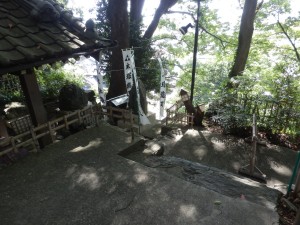 Other temple features include the Tahoto, a special style of pagoda behind the Hondo (also with nice views of the Bay), and an 800-year old camphor tree. There is also the bell tower and Mizuko shrine you will by now be used to seeing. Finally, although all of our temples will be beautiful in sakura season, special attention is paid during mid-March to the blossoms of the 1200 trees at Kimii-dera, because they will officially start off Kansai’s blooming season. Keep your eyes on the sakura forecasts and make a trip down to Wakayama to be part of Kimii-dera’s magnificent sights!
Other temple features include the Tahoto, a special style of pagoda behind the Hondo (also with nice views of the Bay), and an 800-year old camphor tree. There is also the bell tower and Mizuko shrine you will by now be used to seeing. Finally, although all of our temples will be beautiful in sakura season, special attention is paid during mid-March to the blossoms of the 1200 trees at Kimii-dera, because they will officially start off Kansai’s blooming season. Keep your eyes on the sakura forecasts and make a trip down to Wakayama to be part of Kimii-dera’s magnificent sights!
To get to Kimiidera, take a train to Wakayama Station (there are JR and non-JR options for this). From there, take the Kinokuni Line and alight at Kimiidera station. The temple is about a 10-15 minute walk from the station (the train ride will take about an hour and a half from Osaka station).
Happy trails!
Lemmon
